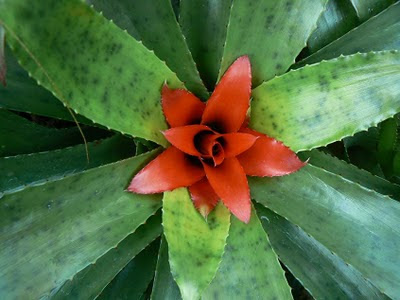 My niece came for Spring Break this last week and on Wednesday we went to the Seattle Conservatory at Volunteer Park. I've been going there since I moved to Seattle in 1980. I never get tired of its changing colors and textures.
My niece came for Spring Break this last week and on Wednesday we went to the Seattle Conservatory at Volunteer Park. I've been going there since I moved to Seattle in 1980. I never get tired of its changing colors and textures.

















Postings from the South Salish Sea

 Looking at sources from art and science, the associations between humans and five are many. Five senses, five extremities, five taste distinctions, five digits on each hand, on and on. So five is symbolic related to human fulfillment. Fruiting flowers have five petals. Flowers, too, are a symbol of fulfillment. To me they also symbolize the human self, abloom in the Garden of Love -- fruiting flowers ourselves. Our favorite flower of love, the rose, has five petals, or multiples of five. Other flowers of love are pentagonal in symmetry as well. Hmmmm. Isn't this interesting?
Looking at sources from art and science, the associations between humans and five are many. Five senses, five extremities, five taste distinctions, five digits on each hand, on and on. So five is symbolic related to human fulfillment. Fruiting flowers have five petals. Flowers, too, are a symbol of fulfillment. To me they also symbolize the human self, abloom in the Garden of Love -- fruiting flowers ourselves. Our favorite flower of love, the rose, has five petals, or multiples of five. Other flowers of love are pentagonal in symmetry as well. Hmmmm. Isn't this interesting?  If you look with soft eyes you can see the pentagram that doesn't quite settle into form in the middle of this echinacea flower.
If you look with soft eyes you can see the pentagram that doesn't quite settle into form in the middle of this echinacea flower. Five is also related to the golden spiral. The golden spiral is based on the proportions of Phi: 1.618... or phi: .618... . Phi is a ratio found in nature (shells, growth patterns of plants, and more) and also in the human body. The Golden Mean applies Phi to a line, dividing it so that the whole and the parts relate to each other proportionally as in a:b as b:c. One of the easiest places to see phi is in the pentagram (here is one of the ways that five comes in). When you have a perfect pentagram, the segments are in a phi relationship to each other. This is part of what has made the pentagram a powerful symbol throughout history, and thereby responsible for giving it a bad rap at some point, becoming associated with evil spells by witches, the devil, and so on.
Five is also related to the golden spiral. The golden spiral is based on the proportions of Phi: 1.618... or phi: .618... . Phi is a ratio found in nature (shells, growth patterns of plants, and more) and also in the human body. The Golden Mean applies Phi to a line, dividing it so that the whole and the parts relate to each other proportionally as in a:b as b:c. One of the easiest places to see phi is in the pentagram (here is one of the ways that five comes in). When you have a perfect pentagram, the segments are in a phi relationship to each other. This is part of what has made the pentagram a powerful symbol throughout history, and thereby responsible for giving it a bad rap at some point, becoming associated with evil spells by witches, the devil, and so on.  Really, the pentagram is a symbol of the beautifully proportioned. There are a million sources on the Internet and in the library for this, but most important to me is understanding that the phi relationship of the part to the whole is geometry's way of expressing the universe creating life in relationship to itself, and perhaps to an even larger whole. Therein lies the pentagram's power and fascination.
Really, the pentagram is a symbol of the beautifully proportioned. There are a million sources on the Internet and in the library for this, but most important to me is understanding that the phi relationship of the part to the whole is geometry's way of expressing the universe creating life in relationship to itself, and perhaps to an even larger whole. Therein lies the pentagram's power and fascination.  Julia Brayshaw, author of Medicine of Place and co-conspirator of all things Venusian.
Julia Brayshaw, author of Medicine of Place and co-conspirator of all things Venusian.  "And how does the golden spiral come in?" I bet you are asking. Well, this is my leap. The golden spiral grows from zero, from nothing. If you look at the heart of a daisy, or sunflower, you'll see that the golden spirals keep forming, keeping enlarging from the center. From nothingness they grow. The Fibonacci spiral, a way of approximating the golden spiral, grows from zero as well. It uses a formula where the first whole number added to the next whole number creates the third in the sequence. Then you add your second whole number to the third whole number for the next. 0+1=1, 1+1=2, 1+2=3, 2+3=5, 3+5=8, 5+8=13, and on and on to create a sequence that looks like this: 0,1,1,2,3,5,8,13,21,34,55,89, etc. This is a sequence, or spiral that grows from within, meaning the numbers are self generated. The ratio of each successive pair of numbers in the series approximates phi, 1.618... , getting closer as you move higher along. All that is needed to begin this algorithmic function is nothing, but somehow, that nothingness is full of potential. And this algorithmic golden spiral is how we grow. Five and the pentagram are symbols of human fulfillment, but put phi in the mix, and you see also the potential for growing fulfillment. (By the way, most flowers have petals that correspond to a Fibonacci number.)
"And how does the golden spiral come in?" I bet you are asking. Well, this is my leap. The golden spiral grows from zero, from nothing. If you look at the heart of a daisy, or sunflower, you'll see that the golden spirals keep forming, keeping enlarging from the center. From nothingness they grow. The Fibonacci spiral, a way of approximating the golden spiral, grows from zero as well. It uses a formula where the first whole number added to the next whole number creates the third in the sequence. Then you add your second whole number to the third whole number for the next. 0+1=1, 1+1=2, 1+2=3, 2+3=5, 3+5=8, 5+8=13, and on and on to create a sequence that looks like this: 0,1,1,2,3,5,8,13,21,34,55,89, etc. This is a sequence, or spiral that grows from within, meaning the numbers are self generated. The ratio of each successive pair of numbers in the series approximates phi, 1.618... , getting closer as you move higher along. All that is needed to begin this algorithmic function is nothing, but somehow, that nothingness is full of potential. And this algorithmic golden spiral is how we grow. Five and the pentagram are symbols of human fulfillment, but put phi in the mix, and you see also the potential for growing fulfillment. (By the way, most flowers have petals that correspond to a Fibonacci number.) The body is full of phi relationships and golden spirals, more than I am aware, I am sure. My favorite is the heart. Muscles wrap the heart with a golden spiral. Within the heart (sense organ, not pump) is a point of stillness, of balance, of pause, perhaps even a point of listening. What do we wish it to receive? The gifts of flowers, the sharing of joy, the flavor of nectar? As the heart expands, energetically spiralling out energy in emotional waves, what do we wish to send?
The body is full of phi relationships and golden spirals, more than I am aware, I am sure. My favorite is the heart. Muscles wrap the heart with a golden spiral. Within the heart (sense organ, not pump) is a point of stillness, of balance, of pause, perhaps even a point of listening. What do we wish it to receive? The gifts of flowers, the sharing of joy, the flavor of nectar? As the heart expands, energetically spiralling out energy in emotional waves, what do we wish to send?  Invocation to the Water Spirits, a flexagon edition I created.
Invocation to the Water Spirits, a flexagon edition I created. For me the hummingbird is an elegant symbol of our loving potential. Now I know the hummingbird also eats small insects, but by and large, it is the sugary nectar of flowers that is their food source. What we source from influences our view. The hummingbird sources from the sweet things in life. What if we all knew how to drink from life as the hummingbird does? And what if we grew as the flower does, opening our hearts to the sun and offering our sweetness without judgment?
For me the hummingbird is an elegant symbol of our loving potential. Now I know the hummingbird also eats small insects, but by and large, it is the sugary nectar of flowers that is their food source. What we source from influences our view. The hummingbird sources from the sweet things in life. What if we all knew how to drink from life as the hummingbird does? And what if we grew as the flower does, opening our hearts to the sun and offering our sweetness without judgment? Salmonberry flower.
Salmonberry flower.

